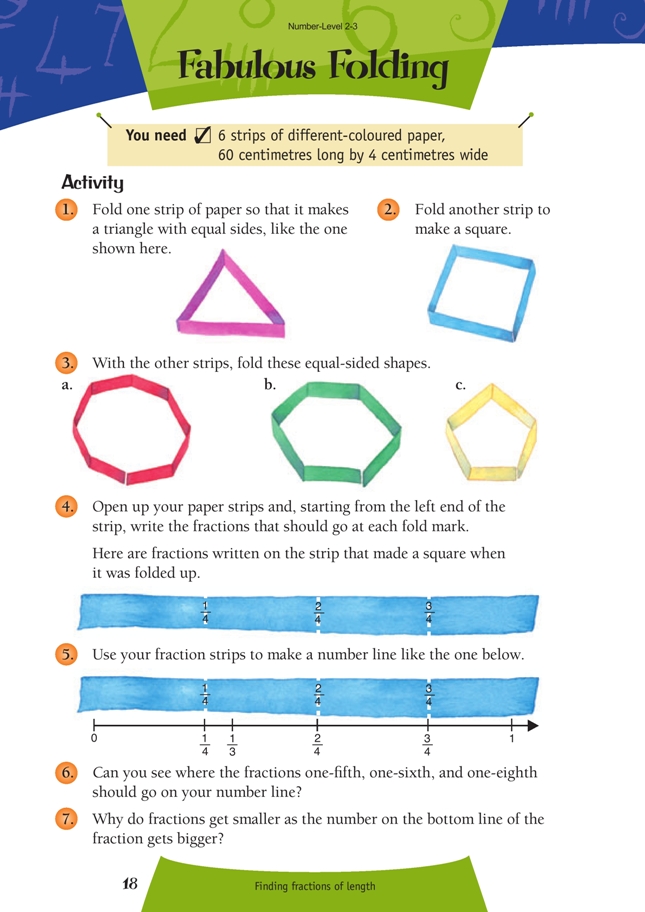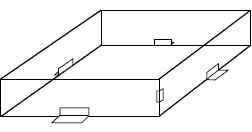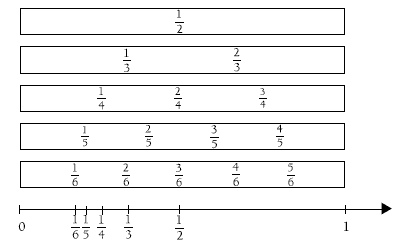This is a level 2 number activity from the Figure It Out series. It relates to Stage 5 of the Number Framework.
A PDF of the student activity is included.
Click on the image to enlarge it. Click again to close. Download PDF (186 KB)
find fractions of a strip
FIO, Level 2-3, Number, Fabulous Folding, page 18
Leave students to attempt these problems with minimal direction. Discuss their efforts with them after they have been trying for a suitable period. It is important that the students have created polygons with sides of equal length (called regular polygons). The relationship between the folded strips and fractions is that in order to form a triangle, the strip needs to be folded in thirds and that to form a pentagon, it must be folded in fifths, etc.
The square is the easiest polygon to form:
This produces quarters. Once the creases are made, they can be used to form the corners for the square.
Note that the corners will need to be right angles. The edge of a book could be used to check this.
Some of the other fractions are harder to fold.
Some students might use ruler measurements to create the equal parts. If the strips of paper are cut to 30 centimetres long (about the length of A4 paper), this will help students to make their folds equal.
Encourage students to link what happened with circular regions on page 17 to the folding activities on this page. For example:
Create the number line with unit fractions (the one on the top line) first. You can expand on this later. Students will need to recognise that “1” is the length of one whole strip, “2” would be the length of two strips, etc.
This activity has many possible avenues of investigation, such as:
“What other names for one-half can you see?”
“Why do the lengths get shorter as the bottom number (denominator) gets bigger?”
“Will the length of a piece ever get to zero? What fraction would that be?”
“Where on the number line would 11/4 (5/4) go? What does 5/4 mean?”
“Why are 4/6 and 2/3 the same length?”
Answers to Activity
1. – 3. Teacher to check
4. triangle: 1/3, 2/3
square: 1/4, 2/4, 3/4
octagon: 1/8, 2/8, 3/8, 4/8, 5/8, 6/8, 7/8
hexagon: 1/6, 2/6, 3/6, 4/6, 5/6
pentagon: 1/5, 2/6, 3/6, 4/6
5. – 6. Teacher to check
7. The bigger the number on the bottom, the more pieces the number line is divided into, and so the smaller each piece will be.





